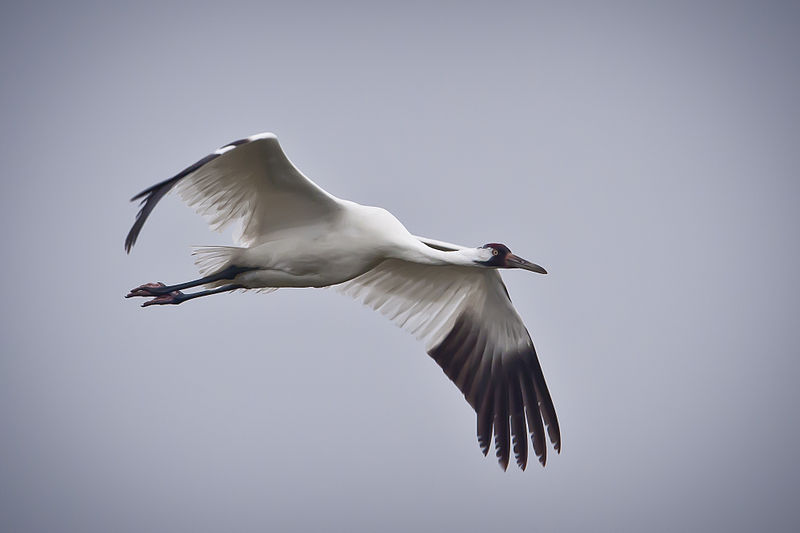Please note: The Academy will close at 3 pm today for Big Bang Gala.
Science News
Whooping Crane Migration
September 5, 2013
by Molly Michelson

The closest I’ve ever come to a whooping crane, perhaps like many folks, is reading Even Cowgirls Get the Blues:
The whooper enters one’s spirit the instant it enters one’s senses. It is perfect radiant sky monster and I cannot describe it.
(Come on, it was written in trippy 1976…)
And it’s likely a good thing that we keep our distance, remarked Greg Smith, of the USGS, on NPR last week:
The more fear they have of humans, the better off we think their survival chances are.
But the potential benefits of staying away from humans makes it difficult to understand the migration patterns of the rebounding bird.
The whooping crane (Grus americana) is North America’s largest bird, standing five feet tall, and survives 30 years or more in the wild. The species neared extinction in the 1940s, as unregulated hunting and habitat loss pushed its population to fewer than 25 individuals. Today there are about 600 whoopers, with more than 150 in captivity.
Humans played and continue to play a huge role in helping the species rebound, despite Smith’s quote above. At captive breeding sites, adult whooping cranes produce chicks which are then hand-raised by biologists using special methods designed to prepare the chicks for life in the wild. Each summer in a Wisconsin marsh, experts train a group of captive-raised chicks to follow an ultralight aircraft, leading them on a 1,300-mile journey to their Florida wintering grounds.
Only this first migration is human-assisted; from then on, the young birds travel on their own, usually in the company of other whooping cranes. Their movements are monitored daily via satellite transmitters, radio telemetry, and on-the-ground observers. All this human activity results in a record of the movements of individual birds over several years, all with known parentage and the same upbringing.
Researchers at the University of Maryland studied these data from whooping crane migrations from 2002 to 2009 to understand whether their migration route is encoded in their genes or is instead a learned behavior.
Publishing their findings in the recent issue of Science, the team determined that the whoopers learn their migration route from older cranes, and get better at it with age.
Whooping crane groups that included a seven-year-old adult deviated 38% less from a migratory straight-line path between their Wisconsin breeding grounds and Florida wintering grounds, the researchers found. One-year-old birds that did not follow older birds veered, on average, 60 miles (97 kilometers) from a straight flight path.
Individual whoopers’ ability to stick to the route increased steadily each year up to about age five, and remained roughly constant from that point on, the researchers found. The scientists hypothesize that older birds are better at recognizing landmarks and coping with bad weather.
“This is a globally unique data set in which we can control for genetics and test for the effect of experience,” says co-author William F. Fagan, of the University of Maryland. “It gives us an indication of just how important this kind of socially learned behavior is.”
So, whatever the role humans play in whoopers’ survival, they clearly need one another to survive and flourish. Here’s to those radiant sky monsters!
Image: US Department of Agriculture